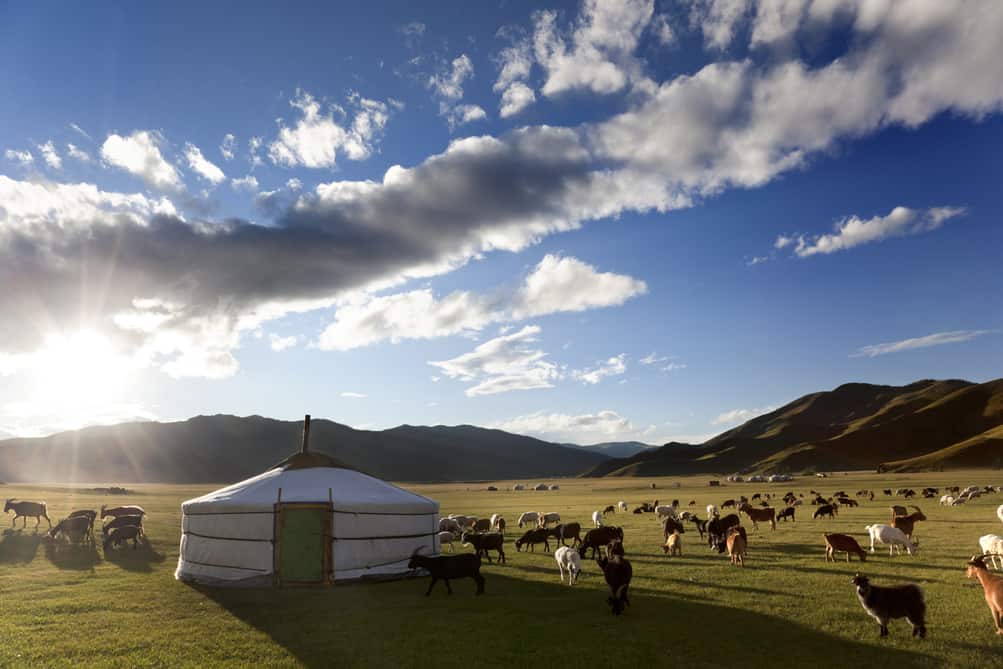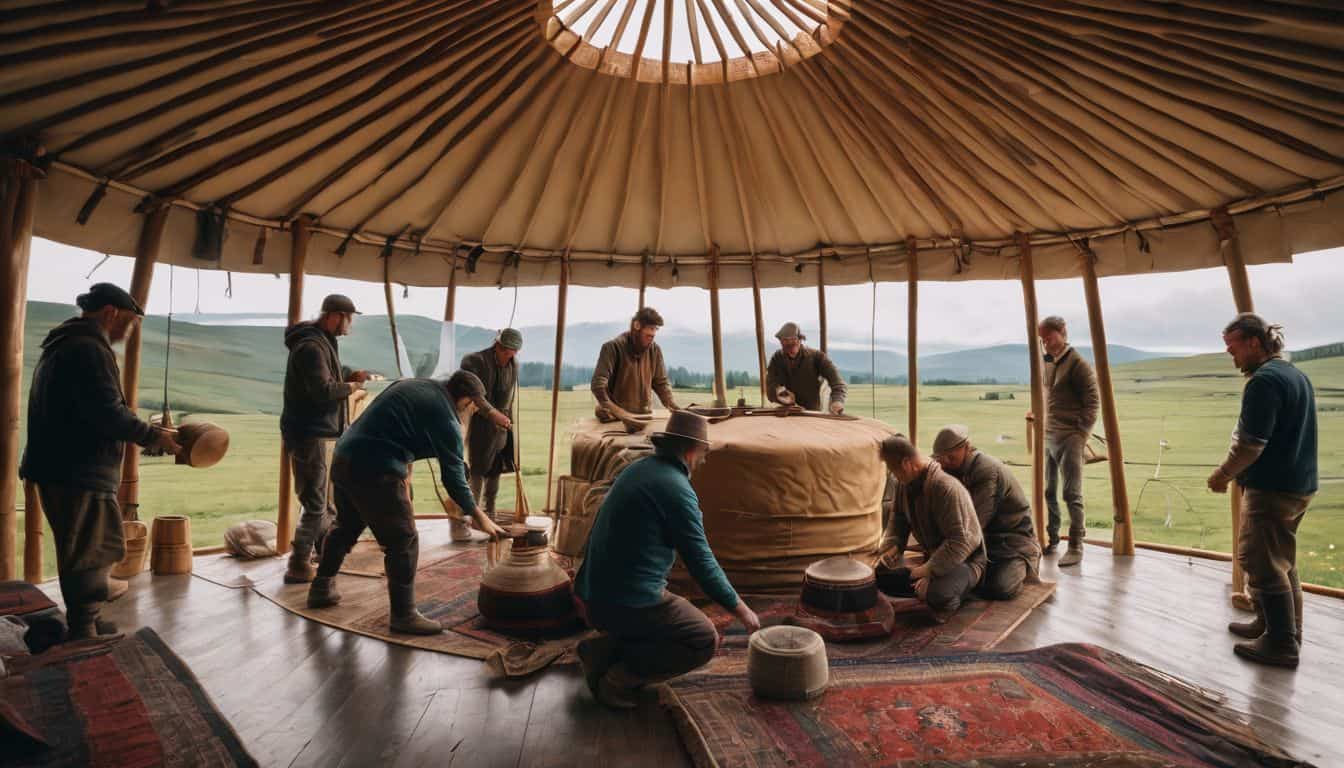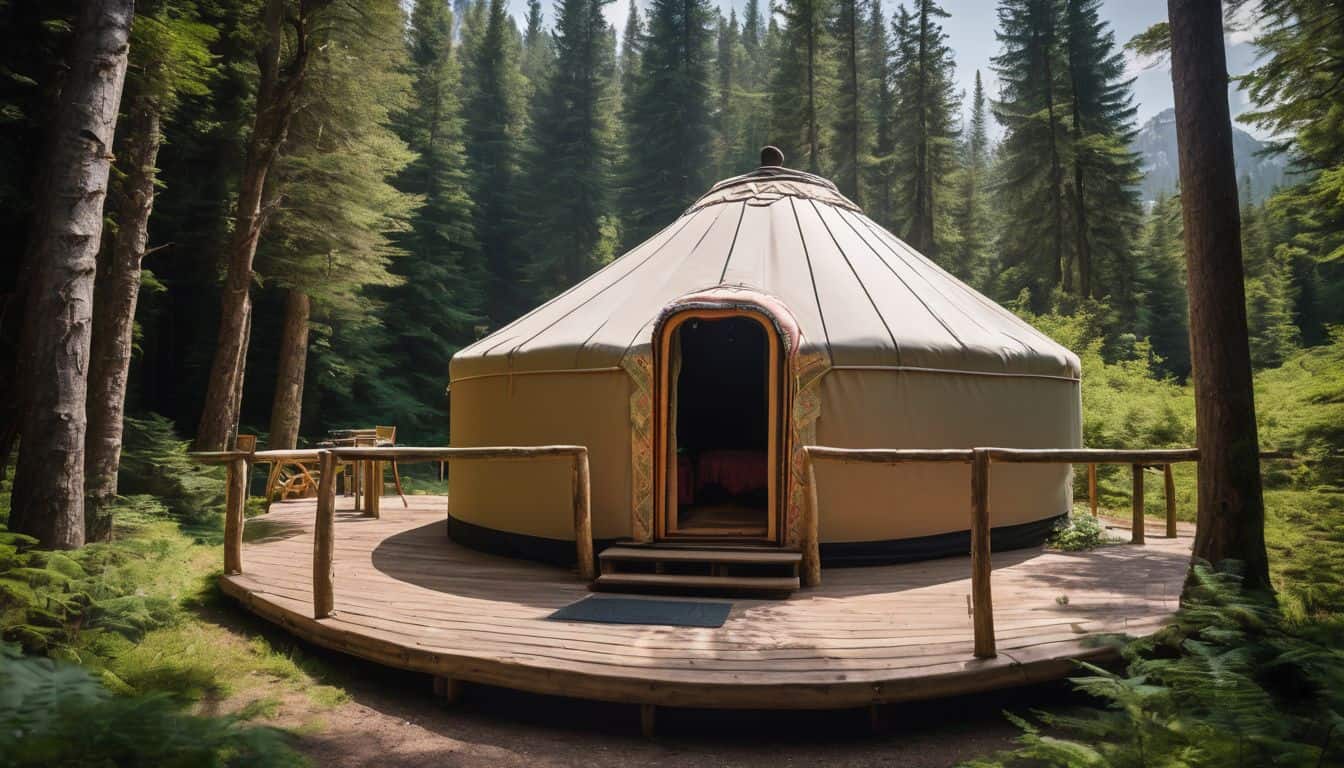Yurts, the circular dwellings originating from Central Asia, have gained popularity in recent years as versatile structures for camping, alternative living, and even remote work. Here we will walk you through the art of yurt making, from traditional techniques to modern adaptations.
Introduction
Yurts have a rich history dating back thousands of years. Originally used by nomadic tribes in Mongolia and other parts of Central Asia, these circular dwellings have been a distinctive feature of life in the region for at least three millennia. The first written description of a yurt appeared in Herodotus’s works in the 5th century BC.
Yurts were integral to the nomadic lifestyle, providing portable shelter that could withstand harsh climatic conditions. Their design has remained largely unchanged over centuries, a testament to their effectiveness and cultural significance. Today, yurts have gained popularity worldwide for their simplicity, portability, and eco-friendly design, appealing to those seeking alternative living spaces and unique camping experiences.

Types of Yurts
Traditional Mongolian Yurts
Traditional yurts, known as ‘ger’ in Mongolia, are made with a wooden frame, felt insulation, and canvas covering. The wooden lattice framework is topped by a wooden ring, with the center of the rooftop left open for light and ventilation. Felt, made from sheep’s wool, provides excellent insulation against both heat and cold.
These yurts hold deep cultural significance in Mongolian culture, symbolizing not just a dwelling but a way of life. Mongolian nomads have used them for centuries, including historical figures like Genghis Khan, who reportedly conducted his empire’s business from within a yurt.
Modern Adaptations
Modern yurts range from portable camping structures to permanent homes, with various eco-friendly options available. While maintaining the basic circular design, modern yurts often incorporate contemporary materials and technologies. Some feature durable fabric covers, double-pane windows, and even plumbing and electrical systems for long-term living.
Eco-friendly variations might use sustainable materials like bamboo for the frame or recycled materials for insulation. These adaptations have made yurts popular not just for camping but also as alternative housing solutions, vacation rentals, and even spaces for yoga retreats or outdoor classrooms.
Specialized Yurt-Making Techniques
From portable Mongolian-style yurts to wood-framed panelized structures, there are various techniques to explore based on your needs and skills. Traditional Mongolian techniques focus on lightweight, collapsible structures ideal for nomadic lifestyles. These yurts can be assembled or disassembled in a few hours.
On the other hand, wood-framed panelized yurts offer more permanence and insulation, making them suitable for year-round living in various climates. Some modern techniques incorporate high-tech materials like aircraft-grade aluminum for the frame or space-age fabrics for the covering, enhancing durability and weather resistance.
Eco-friendly techniques might involve using locally sourced, sustainable materials like bamboo or straw bale insulation.
Maintenance and Care
Maintaining and caring for your yurt is essential for its longevity. Regular maintenance and proper storage for portable yurts are key. This includes regularly cleaning the fabric cover to prevent mold and mildew, checking and tightening the tension on cables and ropes, and inspecting the frame for any damage or wear.
For permanent yurts, maintenance might involve re-waterproofing the exterior fabric, checking insulation, and ensuring proper ventilation to prevent condensation. Removing snow from the roof in winter is crucial to prevent excessive weight. Proper care can significantly extend the life of your yurt, with many well-maintained structures lasting decades.
Legal and Zoning Considerations
Before building a permanent yurt, research local building codes and obtain necessary permits. Zoning laws vary widely depending on location, and yurts often fall into a grey area in many jurisdictions. Some areas may classify yurts as temporary structures, while others might require them to meet the same standards as conventional homes.
Key considerations include foundation requirements, electrical and plumbing codes, and fire safety regulations. Sometimes, you may need to work with local authorities to create specific guidelines for yurt dwellings. It’s also important to consider land use restrictions, especially if you’re planning to build in a rural or environmentally sensitive area.
The Yurt Lifestyle
Living in a yurt requires adapting to a circular space. Many find the simplicity and connection to nature appealing. The open floor plan of a yurt encourages minimalism and creative use of space. The central skylight provides a unique connection to the sky and natural light cycles. Yurt dwellers often feel coziness and intimacy with their living space.
The lifestyle often attracts those seeking to reduce their environmental footprint or live more simply. However, it also comes with challenges, such as managing temperature extremes and adapting to a smaller living space. Many yurt residents find that the lifestyle encourages more outdoor living and a stronger connection to the surrounding environment.

Yurt Interior Design
Designing the interior of your yurt can be a creative and fun process, allowing you to maximize space and create a cozy atmosphere. The circular shape presents unique opportunities and challenges. Many yurt dwellers use the central post as a focal point, arranging furniture radially.
Clever use of room dividers can create separate living areas without disrupting the open feel. Loft spaces are popular for adding extra square footage. When it comes to decor, many opt for a blend of traditional and modern elements, often incorporating natural materials and textures that complement the yurt’s structure.
Lighting is crucial in yurt design, with many using a combination of natural light from the central skylight and strategically placed artificial lighting to create ambiance.
Conclusion
Yurt making is both an art and a practical skill. Whether you’re building a portable structure for camping or a permanent home, creating your own yurt can be a rewarding experience that connects you to an ancient tradition while embracing modern innovations.

Leave a Reply